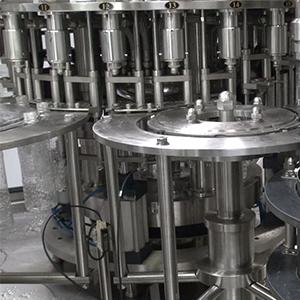Your packaging equipment has been working fine, the filling machine fills, the capping machine caps, and the labeling machine labels, but you want more units per hour. A number of subtle adjustments can be made to each machine to improve the through put of the production line.
Operation
The line operators must keep all of the feed hoppers supplying the line full. It does not matter how fast the filler can go if a filling machine is waiting for empty bottles or has to stop while the product supply is replenished.
Filling Machines
The filling process can be broken down into a series of operations. How fast the conveyor moves containers under the filling heads and then on to the capping machine sets the upper speed boundary. The timing settings of the filling machine must be optimized each time you change the conveyor speed. Check the delay time between when the containers stop under the nozzles and product starts flowing. The time it takes to fill the container is usually the pacing speed constraint.
Check the delay between when product stops flowing and the bottles are released to move on down the conveyer. If your machine is using pin indexing use the entry and exit gate timing to minimize the gap between empty and full containers leaving the fill stations.
Finding the right combination of conveyer speed and timing adjustments requires patience and persistence. Product viscosity on one end and foaming behavior on the other can all work against ultimate filling speed.
Capping Machines
If the capping machine doesn’t keep up with the filling machine, a backup will occur that will cause the filler to pause. There is a mechanism to put a small space between containers entering the capper. As long as the capper can get a cap on every container, coming into the capping machine life will be good and there should be no problem keeping up with the filler feeding it.
Labeling Machines
Pressure-sensitive labelers can keep up with most in line filling machines. Sleeve applicator machines can be fast enough to keep up with rotary filling machines.
The product viscosity, foaminess and response to pressure determine what filling technology is best for getting your product into a container in the minimum amount of time. Container shape and filling aperture can help make the filling process easier. Involving a packaging engineer in the earliest stages of product delivery design can save packaging time and money.


